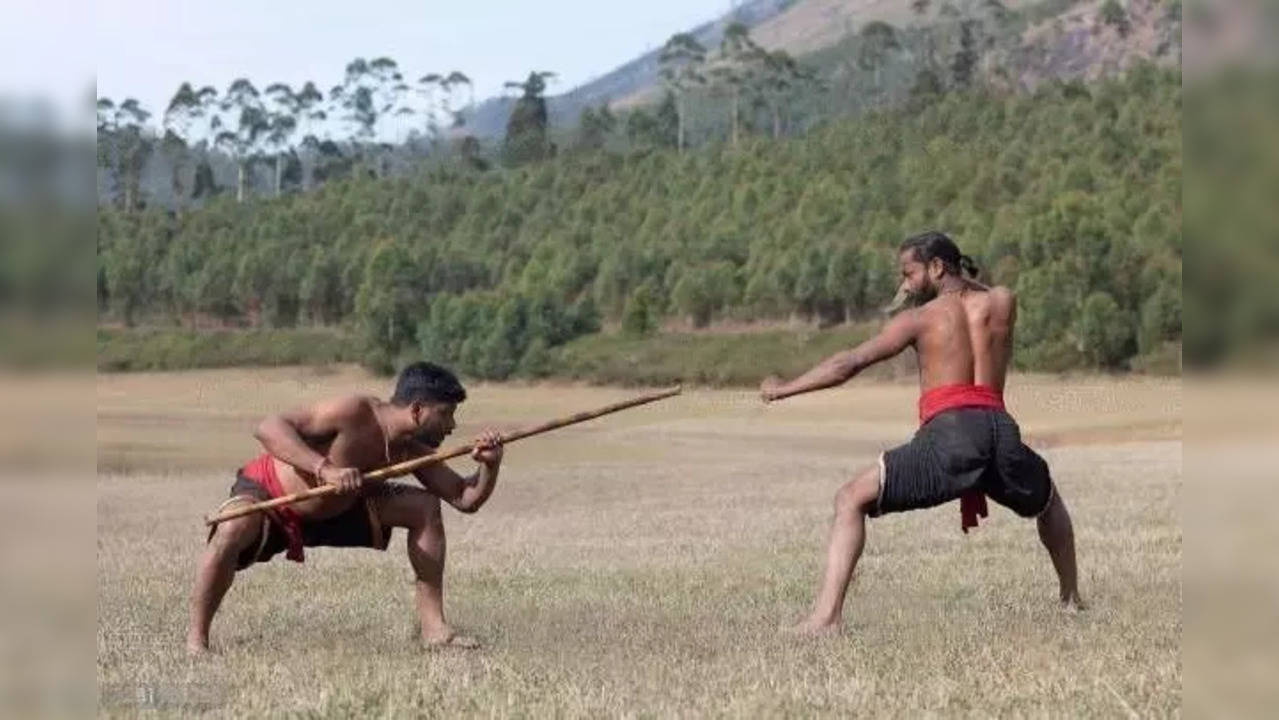The deep connection between Spirituality and Kalaripayattu
Klaripayattu is the oldest form of martial arts in the world. In fact, it is often called the mother of all martial arts. But apart from being an art of fighting and defending, Kalaripayattu is also a deeply spiritual art which teaches its practitioners much more than fighting skills and enables them to get in touch with themselves.

Kalaripayattu and Spirituality
Photo : iStock
When we think of martial arts what comes to mind. Super fit people with very flexible and well chiseled bodies with enormous amounts of strength and agility. People doing gravity defying acts who can beat up several people alone. But that is just one small aspect of any form of martial arts. There is always a spiritual and geographical reason behind the development of any martial art. Martial arts are much more than mere fighting skills and art of self defence.
Take for example Kalaripayattu, the oldest martial art in the world, often called the mother of all other martial arts, is a deeply spiritual art form. In fact, one could say that spirituality and Kalaripayattu go hand in hand. Like most martial arts, Kalaripayattu has a deeply spiritual aspect, which is the basis of all its teachings. In Kalaripayattu the practitioners give reverence to the gods, teachers, lineage and the earth. All these practices become part of the daily routine of the practitioners, and is deeply embedded in the moral and ethical framework of the art.
Kalaripayattu is first mentioned in the Dhanurveda, where it said finding the meaning of life is the main reason for the existence of humans on earth. Human beings are distinctly different from other animals in terms of their thinking capacity, and this ability gives us the power to contemplate each and every thing we experience. As per Indian mythology, the ultimate aim of a human life is to know the eternal truth of the existence of its soul. The eternal consciousness, or God, exists in humankind, and it is up to us to realize it. Kalaripayattu gives the human being the proper skills and knowledge to attain this goal.
Spirituality in Kalaripayattu
When the student steps foot in the kalari, they step in with their right foot, then they touch the earth, their Ajna (third eye) chakra followed by their Anahata (heart) chakra. These movements are followed with a circular hand striking technique to salute and receive the blessings of the Universe and salute to the Earth Mother to receive her grace.
This movement is followed by the student approaching the tiered Puthara altar (representing the 7 chakras) at the head of the kalari. Once again, the touching the altar is followed by the touching of the Third Eye and Heart Chakras. This process is repeated at the completion of the training. This instills in the aspiring student, the proper spiritual mindset and respect necessary to achieve a connection between mind and body.
Ceremony and Offerings
The beginning of knowledge acquisition, or vidyarambam, is marked by tradition and ceremony in kalaripayattu. Vidyarambam means to begin a new art, a new practice or to advance to the next stage of a practice, such as a new weapon.
Although people can start practicing Kalaripayattu at any time of year, the most auspicious time is at Vijayadeshami, the annual day of Kalari pooja (offering) celebrating the victory of the goddess Durga over Mahisharsura. All weapons are given pooja on this day. Vidyarambam is considered to be the name for beginning a practice only when it is started at Vijayadeshami. Vijayadeshami is held once a year in September or October depending on the Malayalam lunar calendar, and although it includes all types of arts, it is particularly important for Kalaripayattu.
The Gurukkal has to first ascertain that the student will never misuse the knowledge entrusted to them, and a close and sincere relationship must exist between Gurukkal and student before the more advanced (and dangerous) combat techniques are taught.
When practice of a new weapon is to be started, the student must not begin until they have brought dekshina, a special type of offering,to their gurukkal and received their blessing. The dekshina generally consists of an areca nut, three betel leaves which signify Brahmi, Visnu and Shiva (the three great Hindu gods of creation, birth, maintenance and destruction respectively), and some money. Fruits can also be included as part of the offering. The student offers the dekshina and touches the gurukkal’s feet, and the gurukkal touches the student’s head in acknowledgement and blessing. Then the training can begin. The dekshina is a tradition from ancient India, and was not only used in Kalaripayattu, it was used for all passing down of knowledge. No new stage is started without the dekshina.
Therefore, we see that Kalaripayattu or for that matter any other martial art never promotes aggression or violence, instead it always follows the spiritual path which gives balance to the practitioners, better control over their minds and actions so that they do not end up harming anyone. The spiritual aspect of Kalaripayattu helps people tap into their inner strengths and use them to take on the challenges of the real world in a peaceful manner. It also helps people become better versions of themselves.
Trending:
End of Article
Subscribe to our daily Newsletter!
Related News





'Agni Nakshatram' Festival Dedicated to Lord Kartikeya Begins Today, Know the Rituals and Significance

Parshuram Jayanti 2024: Know The Date and Special Things Related to Lord Parshuram

Shani Dev: If Shani's Sade Sati is going on then never do this work, Shani Dev gets very angry

Why is the Mangalasutra Black, Despite the Colour Being Considered Inauspicious?

Know the Story of Why Lord Shri Krishna Never Went to Vrindavan After Coming to Mathura









